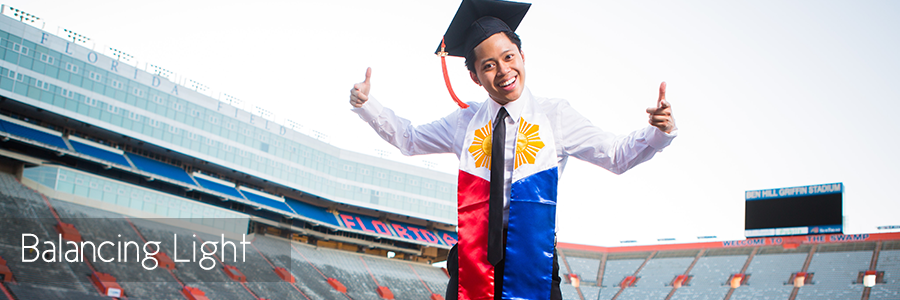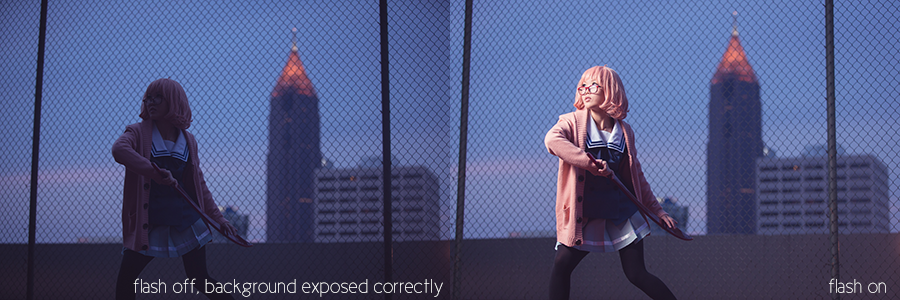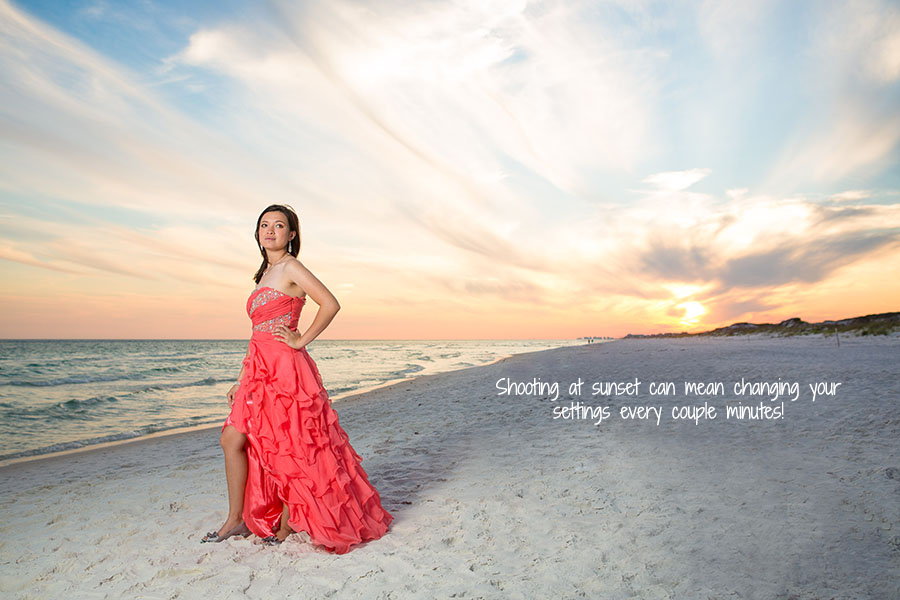
Hey friends! It’s been a long time, but we’re making a comeback with a new tip for you budding photographers out there who think working with flash is like learning a different language. It’s not! I’m going to show you how easy it is to balance flash and ambient light to create all sorts of photos and get you out of the “I only shoot natural light” hole. Hit the jump!
Step 1: Expose for your background
The first thing you have to do is make sure your background is exposed ‘correctly’. Correctly can mean anything between completely blacking out a background to matching the exposure of your subject. The key part to exposing your background at this point is to make sure the speed of your shutter does not go above the highest sync of your flash. That usually ends up being around 1/200 – 1/250 for most on board flashes, and around 1/160 to 1/200 for wireless (not talking about high speed sync for now). What I like to do is set my aperture at whatever I want it to be for the moment, max my shutter speed at about 1/200, and then play with my ISO until the scene exposure looks about right.

Step 2: Set power on your flash
I typically use my flashes set manually. Your flash will determine the exposure of your subject with respect to the settings you used to expose your background. If your subject is overexposed, drop the power to your flash. If your subject is underexposed with respect to the background, raise the power to your flash. At this point the flash should be the primary thing to play with until you get your subject properly exposed. If you find that you’re having to fight with the ambient light being too bright, that means you need to wait until your scene dims a bit (time of day or clouds) or you need more flash power. More flash power can mean another hotshoe or two, or using a strobe.
Step 3: Readjust
The weather can change at a moment’s notice, and the time of day will chug along while you’re shooting so it’s important to be able to readjust your settings to compensate. Just remember that if you have a constant aperture and ISO, the shutter speed will only affect the ambient light in your photo and not the flash. ISO and aperture are overall adjustments of exposure, so if you mess with those, you’ll have to go back and fix your shutter speed and flash to match again. All else fails, repeat step 1 and 2 until you get it right! :]

Step 4: Play
Like I mentioned earlier, there’s no real ‘correct’ way to expose a shot. All these rules can be applied to long exposure shots when dealing with a person in the foreground, to silhouette shots, to making it look like night when you’re shooting at 4 in the afternoon. Play with your settings and get creative.

Hope that helps! How do you like to balance your flash? What kind of flash are you using? Do you have a strobe that can overpower the sun?! Comment below and let us know how you like to do it and if you want me to talk about another quick tip topic!
Thanks friends! Look out every week for new blogs!



